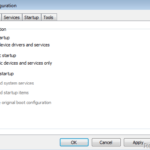A clean boot of Windows is the situation in which you force Windows to boot only with the minimum set of services and programs that are necessary for the Windows operation. The clean boot state can be used to troubleshoot Windows problems, such as startup problems, slow performance problems, crashes, etc..
The Windows Clean boot state, is commonly used to diagnose problems that may occur after an automatic Windows Update, a software or a device driver installation.

If you force Windows to perform a clean boot, Windows will start only with the required Microsoft services that needed to operate properly and disables all other third party services or applications that don’t needed, (like the Antivirus service, the Skype service, etc. ) and may cause software conflicts or crash problems.
In this tutorial you can find instructions on how to perform a clean boot on Windows OS in order to troubleshoot Windows startup or other problems.
How to perform a clean boot on Windows 10, 8, 7 or Vista.
Note: In order to force Windows to perform a clean boot you must login to Windows by using an Administrator account.
1. Press Windows ![]() + R keys to open the run command box.
+ R keys to open the run command box.
2. In the Search box, type: msconfig & click OK.
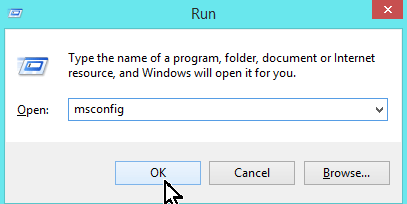
3. At Services tab, check the Hide all Microsoft Services checkbox and then press Disable All.
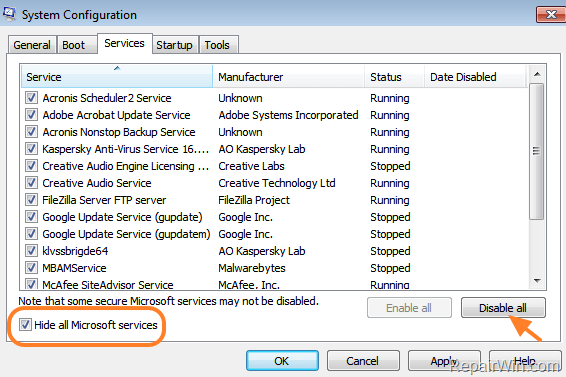
4. Then select the Startup tab and press again the Disable all button.
Note: On Windows 10 or 8, you have to select the Open Task Manager option and then to disable one by one all listed items.
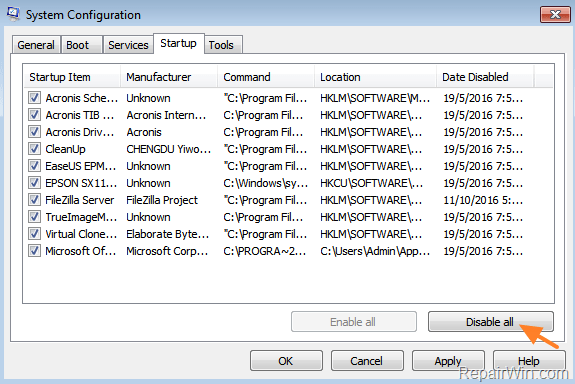
5. Click OK and Restart your computer to start Windows in Clean Boot state..
6. If after restart your computer is working fine and without problems. then open System Configuration utility again and enable one by one all disabled items and restart, until you find out which one causes problem.
How to exit from Windows Clean Boot State.
If you want to exit from the clean boot state and start Windows normally:
1. Lunch the System Configuration utility and at the General Tab choose the Normal startup option.
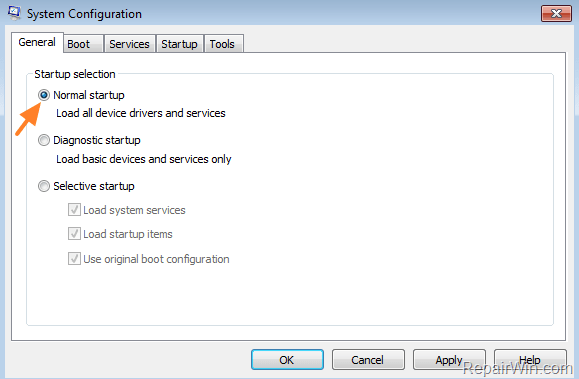
2. Then choose the Startup tab an Enable All Windows Services.
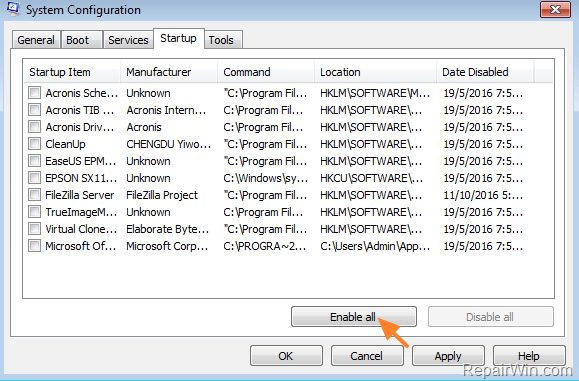
3. Click OK and Restart your computer.
That’s all! Did it work for you?
Please leave a comment in the comment section below or even better: like and share this blog post in the social networks to help spread the word about this knowledge.

